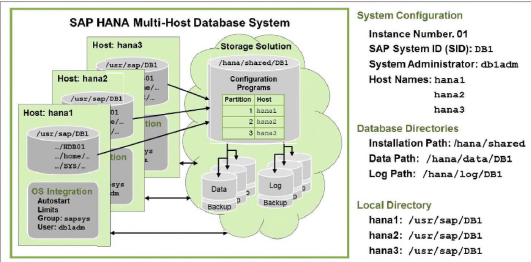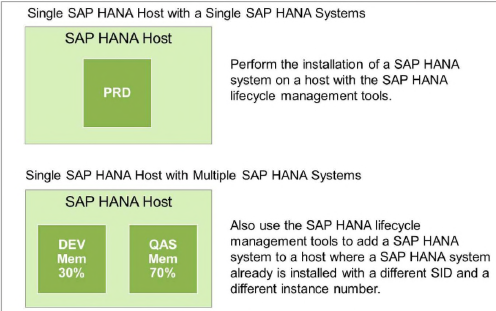Unit 2: Lesson 2
*****************************************************************************
OVERVIEW: This lesson describes the Linux operating system requirements that have to be fulfilled before you can start the installation of an SAP HANA system. This lesson does not replace the “SAP HANA Server Installation and Update Guide" for SPS11 and the SAP HANA installation SAP Notes.
******************************************************************************
USE CASE:
*****Linux OS requirements before installing SAP HANA*****
*********************************************************************************
*********************************************************************************
1)
Explain the SAP HANA system concepts and system
types
2)
Clarify the SAP HANA system concepts and system
types
3)
Explain the required file system structure and
directories and their recommended sizes
1)
Explain the SAP HANA system concepts and system
types
·
Single-Host System
·
Multi-Host System (More than one host)
·
Can be configured as active worker hosts or idle
standby hosts
2)
Clarify the SAP HANA system concepts and system
types
A)
Host
a.
hardware and operating environment in which the
SAP HANA database runs
i.
resources and services
1.
CPU, Memory, Network, and storage
b.
supported on:
i.
SUSE Linux Enterprise Server
ii.
Red Hat Enterprise Server
c.
storage for an installation does not have to be
on the host
i.
can be in shared storage
d.
for multi-host SAP HANA systems
i.
shared storage or storage that is accessible
on-demand from all hosts is required
B)
System
a.
One or more instances with the same SAP system
ID and instance number
b.
System = SAP HANA database
c.
If SAP HANA system has more than one instance
i.
Distributed over several host
d.
SAP system ID
i.
Identifier for the SAP HANA system
C)
Instance
a.
set of SAP HANA system components that are
installed on one host
b.
system can be distributed as several instances
among several hosts, but each instance in a multi-host system must have the
same instance number.
3) Explain the required file system structure and directories and their recommended sizes
Standalone SAP HANA System with Single-SID and Multiple-SID
installations
Hardware Rqrmts:
·
20GB Ram in total for software
·
15 GB for the basic software
·
5 GB for programs
·
Space for trace files
·
Addt’l storage for data and log volumes varies
SAP HANA
NETWORK CONNECTION RQRMTS:
·
Dedicated server network communication of
10GBits/s between the SAP HANA landscape and the source system for efficient
data replication
Important
Directories and their Sizes:
PIC
·
SAP HANA system in a production environment must
not share any infrastructure with another SAP HANA system
·
Hosts running more than one SAP HANA system
(sometimes referred to as multi-SID installations) can only be used for
·
Non-production purposes:
·
Development
·
QA
·
Testing
·
production systems with high availability
·
possible to share some temporarily unused
resources from the standby hosts.
·
as the standby resources are needed, they must
become exclusively available for the production system and are no longer shared




No comments:
Post a Comment